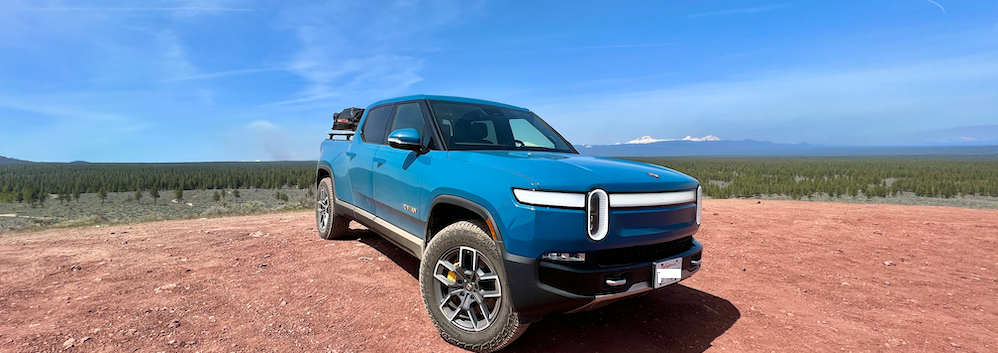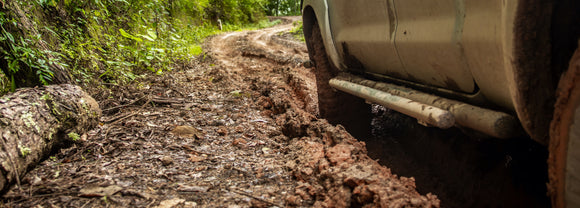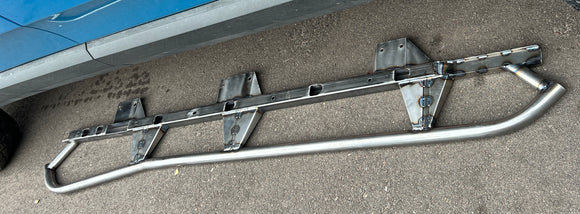
Planning an Off-road or Overlanding Adventure in Your Electric Truck
Highlights:
- Plan before you go using your truck’s in-car navigation or an app like “ABRP”.
- Prevent range anxiety before it happens by planning in a small buffer in your trailhead arrival and departure State of Charge (SoC).
- Take a mental note of a back-up charger along the route just in case.
- In a pinch, you can often stop at a campground and pull a few miles off an RV charger (NEMA 14-50 or NEMA TT-30).
You bought or are thinking about buying an electric truck or SUV. Maybe it’s a Rivian, maybe a HummerEV. Either way, that’s awesome! If you are coming from a traditional gas truck/SUV, you might be concerned with how, or even if, you’ll get to those far out places you enjoy in your current vehicle.
Getting Out There
Assuming you read my other article on road tripping in a non-Tesla, then you should already know there is a substantial network of ultra-fast DC charging stations around the US for charging a Rivian R1T/R1S, Ford Lightning, etc. Most of these chargers are along major highways—the highways that often lead to your favorite campsite, trail, or public land. You’ll just need to put a little thought into things before you leave, which should really be the case with any backcountry excursion.
A little planning using your car's in-vehicle route planner, or an app like A Better Route Planner (ABRP), should enable you to get to virtually 99% of national parks, campsites, and trailheads. These more detailed apps allow you to plan your trip and do so with key factors like elevation gain in mind automatically. (Just like a gas car, prolonged elevation gains at speed will reduce your efficiency and overall range). These apps also allow you to configure the route based on your particular vehicle’s battery, variables like additional weight and ambient temperature (EV range can be affected by cold weather, but this impact varies dramatically from vehicle to vehicle), and the charge you’d like to have when you depart/arrive.
The team at Electruck4x4.com often takes trips to remote locations throughout the Western United States in our Rivian R1T. In planning our trips, we take into account how long the trail will be, the elevation gain, and how many nights we will camp. We then use ABRP to map to the trailhead and use its “arrival state of charge” feature to ensure we have enough charge to navigate the trail.
On the Trail
It’s generally about this time when traditional off-road and overlanding enthusiasts state that X-hundred miles is not enough to traverse their favorite trail. I’ve heard people go so far as to claim they won’t be comfortable driving an electric truck into the backcountry until it offers 1,000 miles of range. This is where it’s important to be honest with yourself. Seriously. The next time you hit the trail, set the trip meter. Take note of how far you drive. Most often, you will find yourself out there for hours or days on end, but really only cover a few hundred miles, if not much, much less. It’s also worth considering:
- Your EV won’t consume much energy when you are stopped or idling the way your old Tacoma or Wrangler did.
- You will likely not lose any (if not gain) a fair amount of range when you use regen (the energy that your vehicle puts back into the battery when you lift your foot off the accelerator) to descend whatever you climbed on the trail.
Obviously each trail is unique and performance varies based on host of variables ranging from throttle usage to weather. We've found the best way to get comfortable with estimating off-road EV range is to start small.
- Visit a nearby OHV (off highway vehicle) park or take a trip to a campsite that has RV charging.
- Take note of your range consumption, the temperature, elevation loss/gain, speed, time spent in motion, etc.
- Plan, plan, plan. Just like in our first article on road-tripping, planning your trip makes all the difference. This is even more critical if you are traveling into the backcountry. Have a game plan and a back-up plan on what you will do if something goes wrong, you've made a miscalculation, or something unexpected happens like equipment failure or an unexpected frost.
- Incorporate a buffer into your plan. (We're still wimps here and over plan an extra 15% extra just in case).
As you do these things you will find yourself increasingly able to read a trail map and estimate its impact on your electric truck's range. Likewise, you'll gradually become more comfortable and need less of a buffer for comfort.
Getting Home
So you’ve planned both your trip to the trailhead and your time on the trail. It’s now time to plan your trip home. Just like you did on the way there, you’ll then want to ensure you’ve mapped a return trip before you leave. This can be done just as easily by setting the starting state of charge (SoC) with the amount of range you think you’ll have when you get back to the trailhead. The app should take it from there.
Don’t let your buddy with the Super Duty scare you off with whatabout-isms like “what if you want to tow a house up hill in the middle of a snow storm”. With a little planning, and assuming you aren’t crossing Mongolia or the Sahara, you should have more than enough range to get you out to your favorite off-road or camping destination and back. Furthermore, you’ll do so with more available torque, lower fuel costs, and less pollution. You’ll even be surprised at your ability to hear the sounds of nature in your quiet EV. Now get out there and get off-road!
-The Electruck4x4 team


